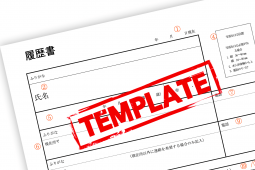The practice of writing cover letters for your resume or rirekisho is not traditionally followed in Japan. However, with the increasing internationalization of business, and the spread of online job applications, these have become a more common part of the process. In addition, international companies will require one. This means it’s becoming an important skill to have if you want to work in Japan.
Luckily, the basic structure of Japanese cover letters is mostly the same as in other countries, so one standard structure will work for many companies. Of course, the problem is the language.
As with most business communication in Japan, a Japanese language cover letter will need to use keigo (highly formal Japanese), as well as a variety of standard business writing phrases. This step-by-step guide includes examples and tips that should help you deal with both!

Opening
Assuming you are actually writing an email, rather than a letter, you’ll start with the subject. Something like:
- 採用応募について [OO]
Responding to Job Opening [Full Name]
The body of the email will start with the usual recipient name, greeting, and self-introduction.
When addressing the recipient, you will need a couple of added elements. You will start with the company name, then the recipient, and their title. For example:
- 株式会社ヒューマンリソシア
Human Resocia Co., Ltd. - 人事部長 鈴木太郎様
Head of Human Resources Suzuki Taro
- If you do not know who exactly will be reading the email, you can use:
採用ご担当様
Dear Hiring Manager (instead of the name)
However, do try to figure out the name of the person you will be talking to, as a matter of politeness.
Introducing Yourself
You will start the main section with a simple introduction. Do not worry about an extensive list of skills or experience, as that’s what your resume is for. Focus on your name, nationality, and a simple job title. Again, In Japanese you will be using keigo, so research those terms a bit to make sure you are familiar. Then, you will explain the reason you are contacting the reader: the job you are interested in taking, and why.
Here are some phrases to help you.
- 初めてメール致します。
I am happy to meet you. - OOと申します。
My name is OO. - XXで貴社の募集広告を拝見し、応募いたしました.— I saw the job advertisement you placed in XX, and would like to apply.
- OOとして御社に勤務したいと考えております。
I would like to work for your company as OO (name of position). - It is also good to express an interest in talking face to face, which is important in Japanese companies.
ぜひ一度、お話を伺える機会をいただければ幸いです。
I would be grateful for an opportunity to discuss this with you directly.
Reasons for Wanting to Leave Current Position
The second paragraph is your chance to head off any questions about why you’re changing jobs (something that is still viewed with some suspicion in Japan at times). You will, of course, want to remain positive. Do not offer any criticisms of your current employer or complain about conditions, because this may create an impression of you as a difficult employee. Describe your reasons in terms of what you can offer to the new employer, and what you feel you will gain from them.
- 現在の○○の経験を活かし、さらに規模の大きいプロジェクトを担当したいと考えたためです。
I would like to bring my experience as OO (current job title) to your company, and would love an opportunity to be put in charge of larger scale projects. - 私は現在〇〇の仕事に就いており、貴社が募集されているXXの仕事にも、経験やスキルで必ずお役に立てるものと存じます。
I believe my experience and skill as OO (current job) could be of great use in the position XX that your company is hoping to fill.
Closing
The below polite closings are useful for all kinds of business emails. Feel free to use them as-is, and use a standard business signature (name, contact information, etc.) to end your email.
- お忙しい所恐縮ですが、よろしくお願い申し上げます。
I apologize for interrupting your busy schedule, and look forward to further communication.
Using the above, you should have a basis for applying for a job in Japan. Of course, you will still need some help with the language when writing in Japanese, and it is always a good idea to have a native speaker check your grammar and language. Good luck with your job search!








